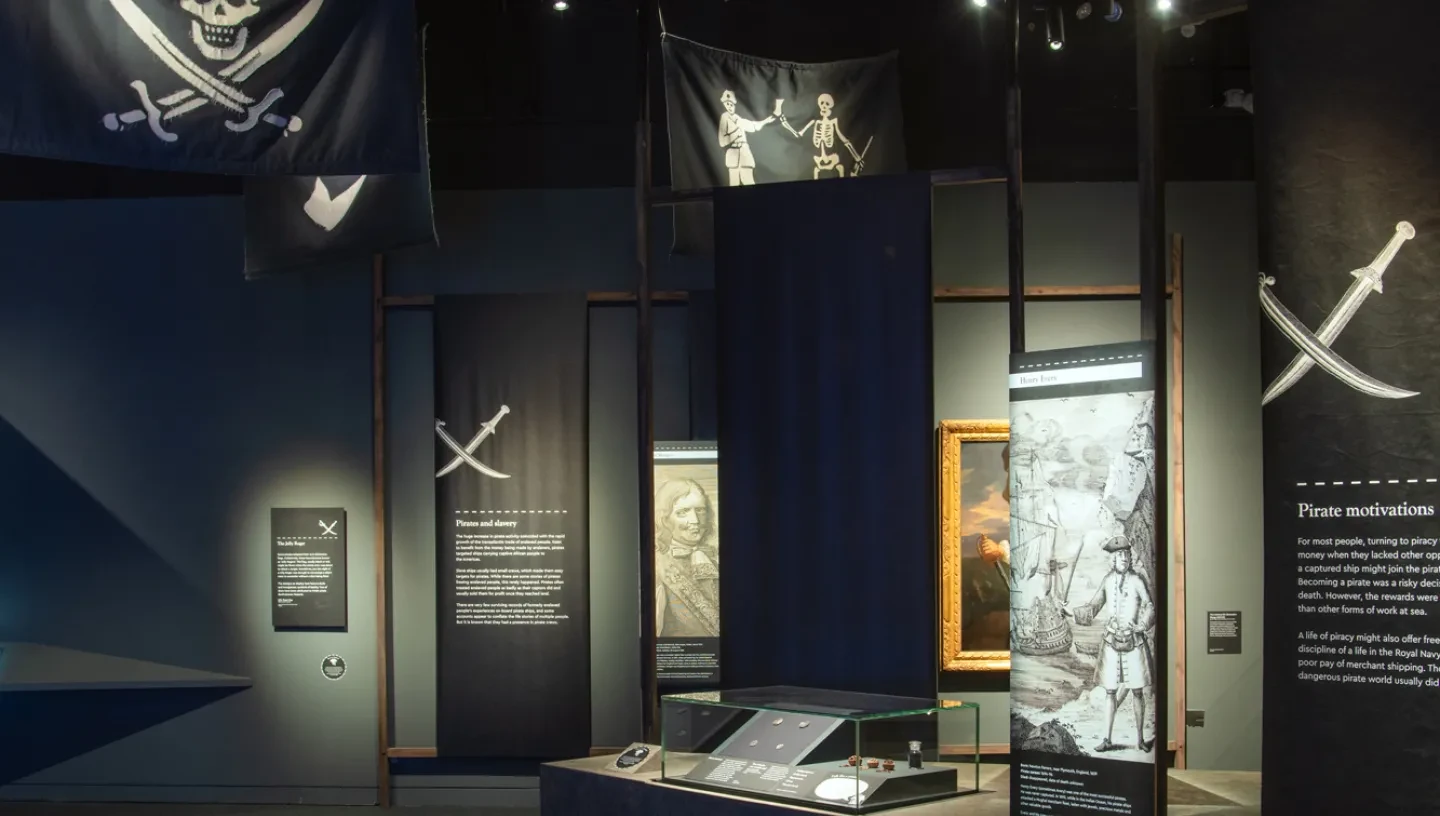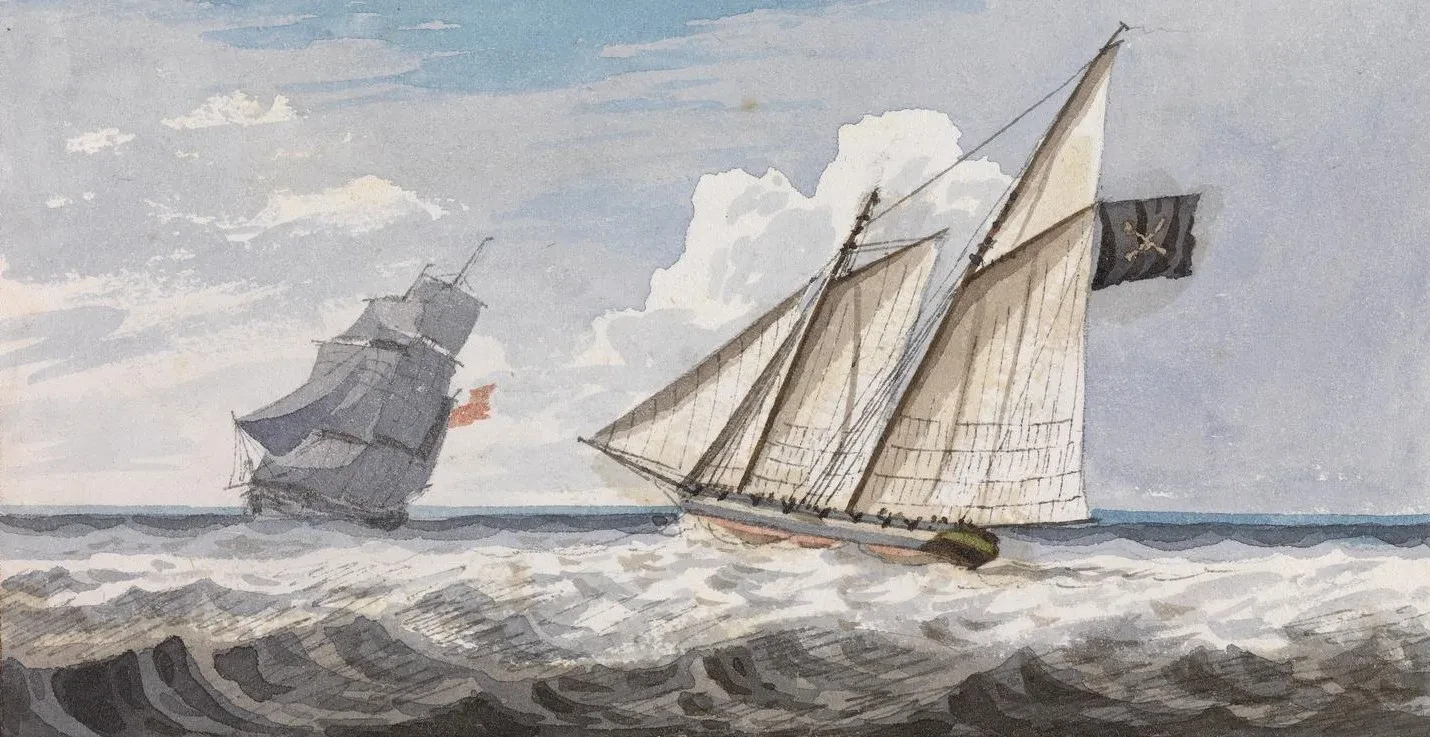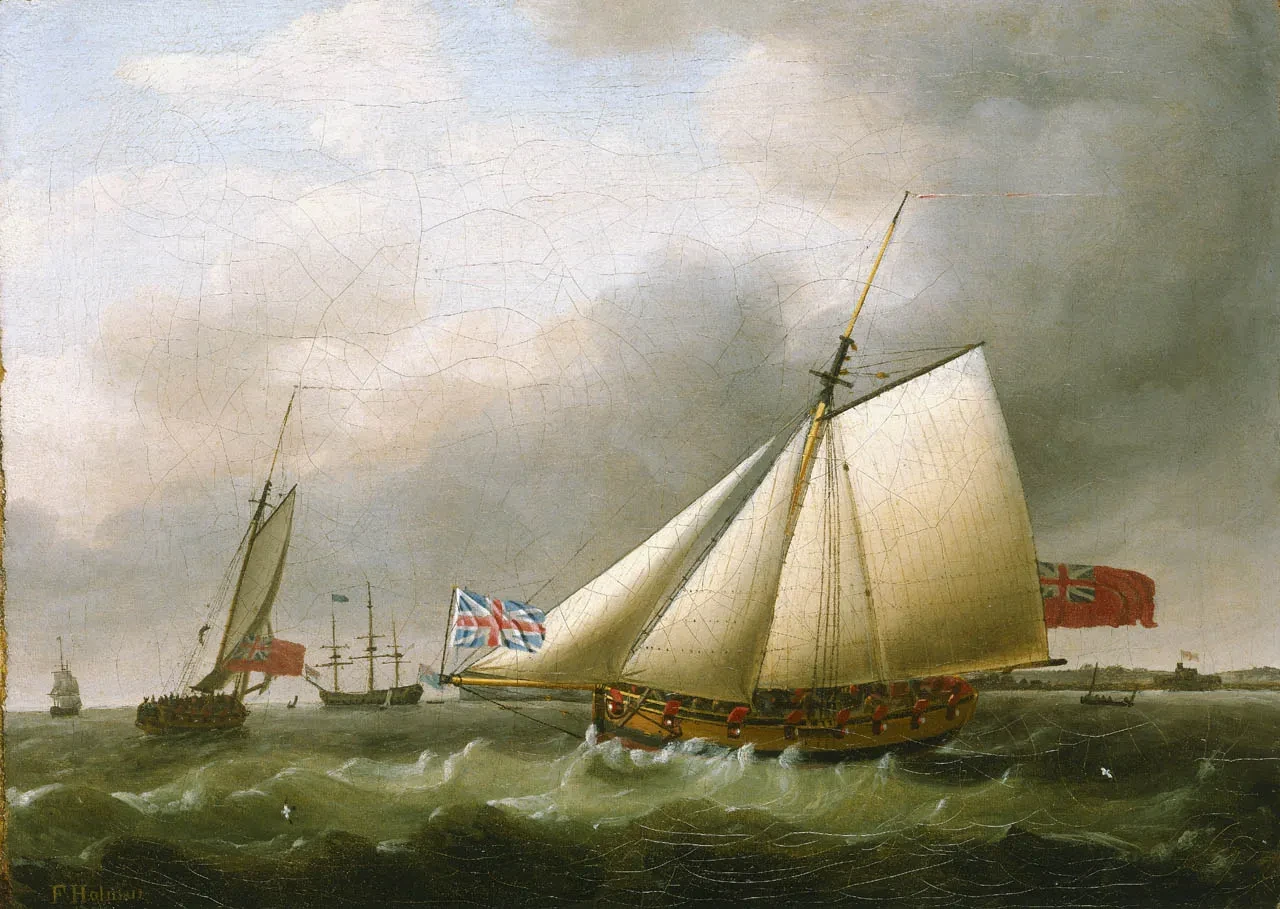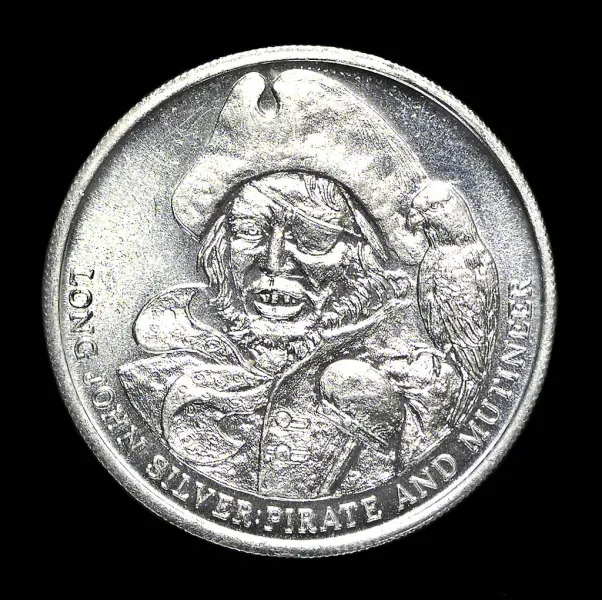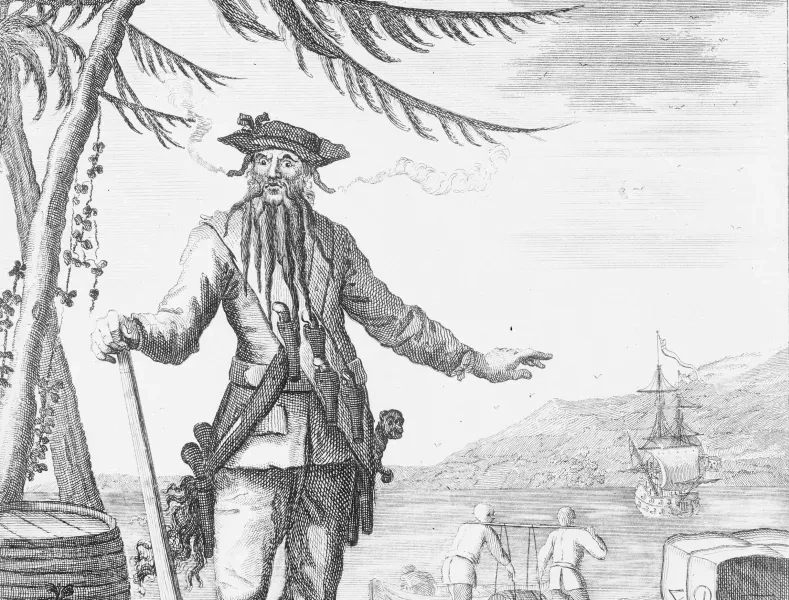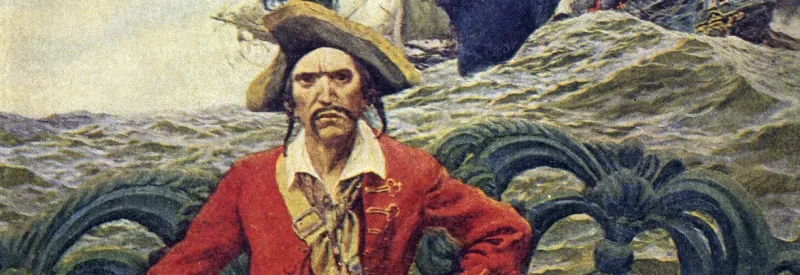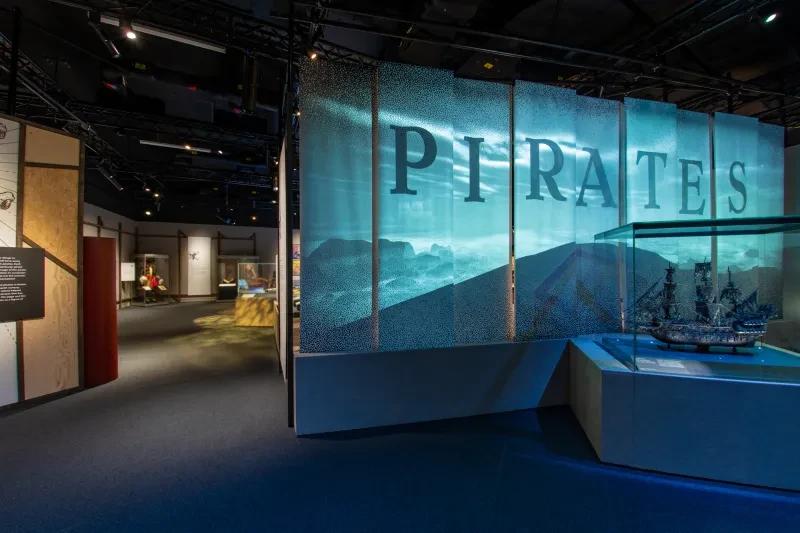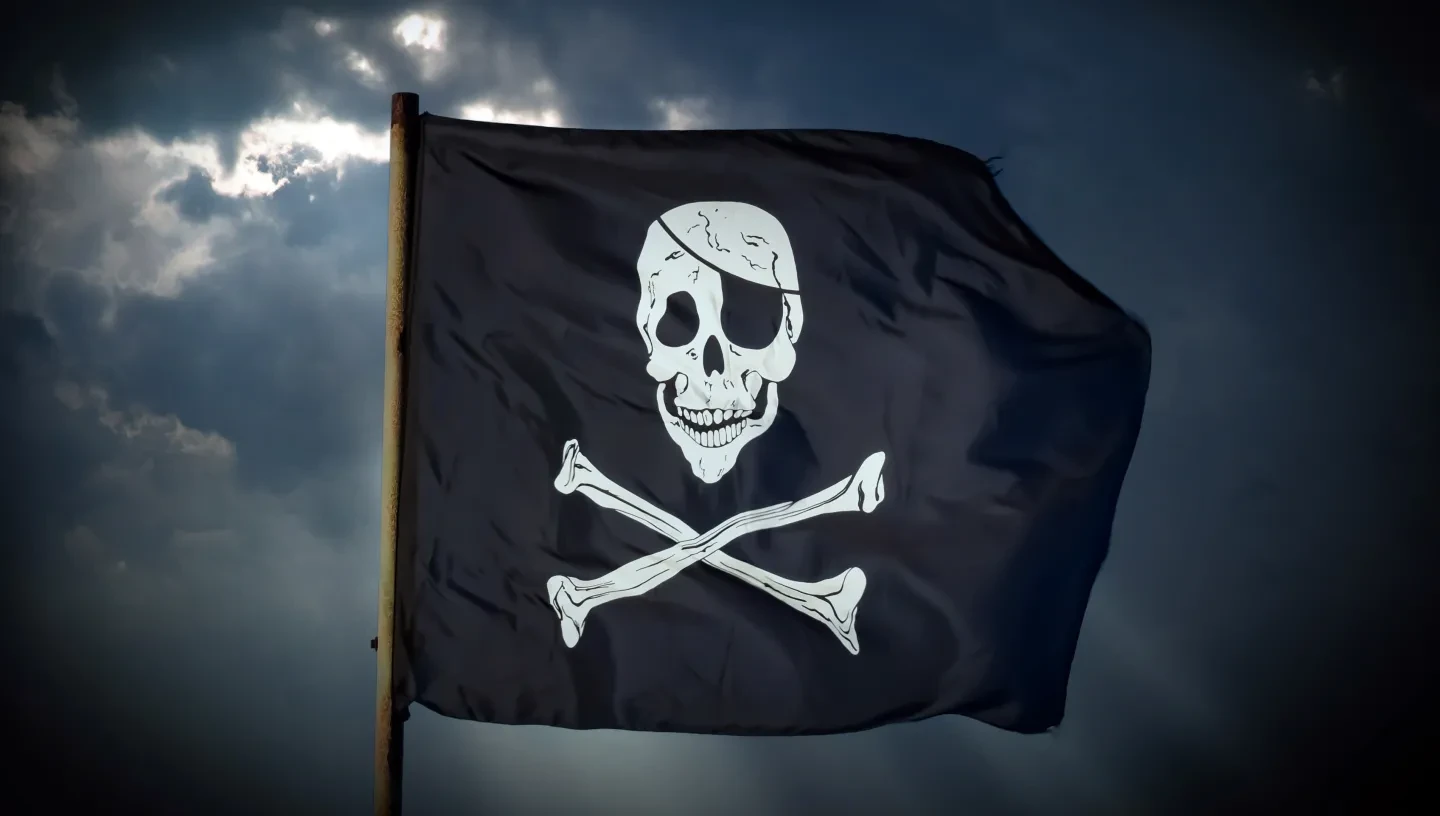
If you think of a pirate flag or ‘Jolly Roger’, you might imagine a white skull and crossbones on a black background – an image as strongly associated with pirates as treasure chests and saying ‘arrr’.
While this was a popular flag design towards the end of the ‘golden age’ of piracy, many pirates active during the late 17th and early 18th centuries had their own unique flags featuring symbols associated with death.
The flags weren’t for decoration: pirates used them to communicate with ships under attack, to threaten, frighten and force surrender from the crews.
Learn more, including where pirate flags came from, how they were used, and the designs of some famous Jolly Rogers.
A Jolly Roger is another name for a pirate flag.
The name has become closely associated with the skull and crossbones design because it often appears in popular culture depictions of pirates.
How were pirate flags used?
Pirate flags were used to send messages to victims from a distance.
Their main purpose was to scare targets and invite them to surrender, which was the best outcome for a pirate - it meant they could take what they wanted without conflict and loss of crew.
Pirates would raise a black flag to signal that they would show mercy if the target surrendered. This could be accompanied by firing a warning shot.
Other pirates used their flags to deceive, flying ‘false colours’, like the flag of a friendly nation, to fool victims into believing they were a friendly ship. The pirates would only reveal their true identity when they were close by, giving victims very little time to fight back.
If a ship agreed to surrender the crew would communicate this by taking down their own flag – this is known as ‘striking the colours’. If they didn't, the pirates might raise the stakes with a red flag.
A red flag was a warning that ‘no quarter would be given’: the pirates would show no mercy and would fight to the death to capture the ship.
A person could be executed simply for owning a pirate flag, so raising one was a serious warning that the pirates didn’t follow ‘fair game’ maritime rules.
Because pirates were not part of the navy or privateers (individuals commissioned by a country during wartime to attack and capture enemy ships), they didn't have to be reasonable in battle, like accepting surrender from the enemy after resistance.
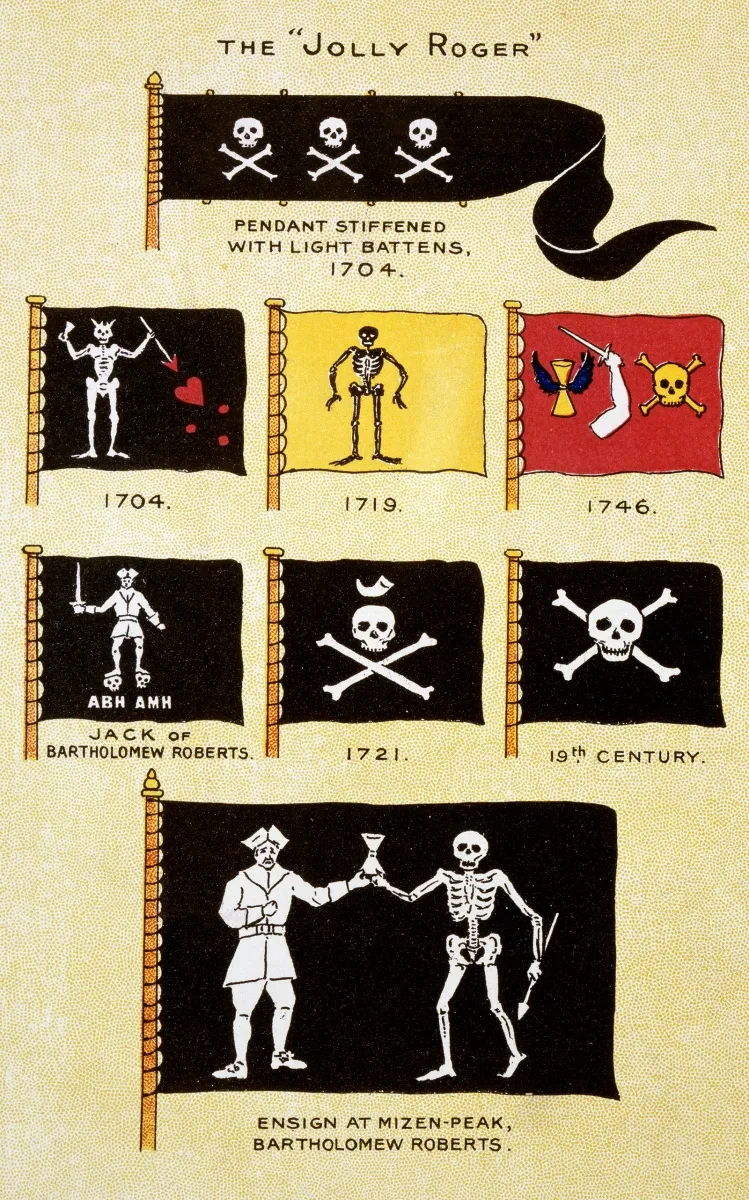
What did pirate flags look like?
Pirate flags varied from one to another, but they were primarily black with white and/or red symbols on them. Some flags had white symbols on a red background, while occasionally yellow flags were used.
As very few flags survive from the ‘golden age’ of piracy, most of what we know about them comes from eyewitness accounts, newspapers or books.
One key source is Captain Charles Johnson’s 1724 book A General History of the Pyrates, which includes descriptions and illustrations of the flags.
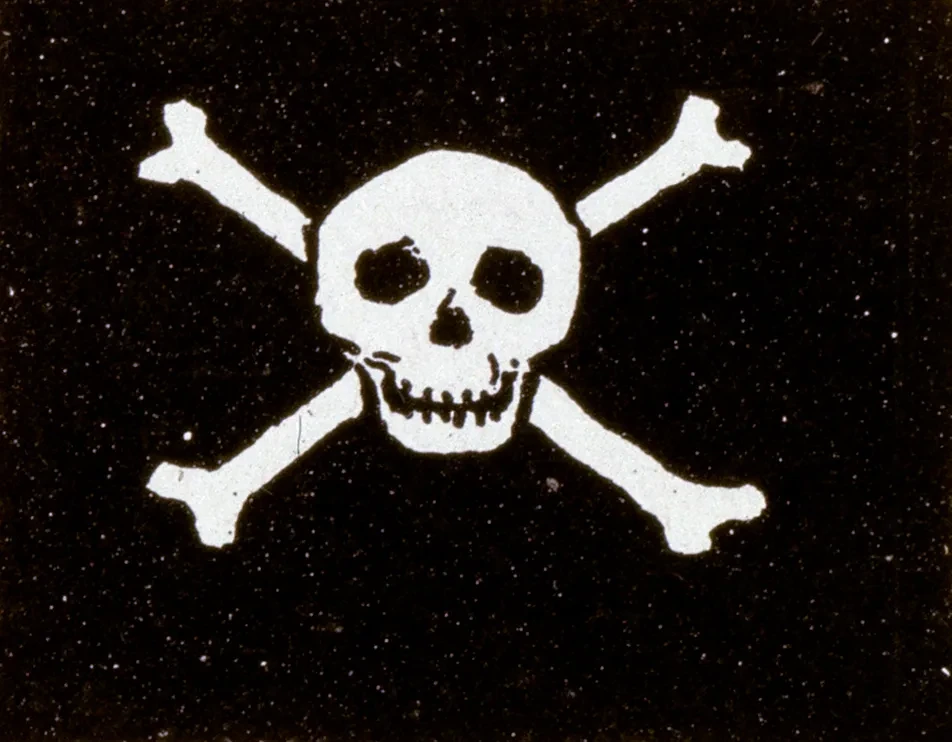
What is the most famous pirate flag?
The white skull and crossbones on a black background, also called a ‘Death Head’, was commonly used in the 1720s when piracy was declining.
The first pirate use the Death Head is thought to have been French pirate Emanuel Wynn in 1700.
The design was adopted by many famous pirates including Black Sam Bellamy, Edward England, John Taylor, Henry Every and Calico Jack Rackham.
The origins of pirate flags
English privateers were individuals commissioned by the monarch to capture and raid enemy ships. Before the 16th century, privateers were required to fly a red flag with a Union Jack ‘in canton’ to distinguish themselves from the Royal Navy.
‘In canton’ means it was placed in the upper left corner of the flag and usually occupied around a quarter of the surface.
Many privateers later turned to piracy and kept the red flag, which had come to be used generally across nationalities to signal no quarter would be given.
Pirate flags were mainly plain red or black until the late seventeenth and early eighteenth centuries, when several pirates of the ‘golden age’ – like Blackbeard and Ned Low – adopted their own distinct designs.
This customisation became more widespread, allowing pirates to convey their reputation through their flag and tell victims who was attacking. Some pirates’ violent reputations would be fearsome enough to prompt an immediate surrender.
Why is it called a Jolly Roger?
It is thought that the name Jolly Roger was first used by pirates Bartholomew Roberts in 1721 and Francis Spriggs in 1723, as recorded by Captain Charles Johnson in A General History of the Pyrates.
Roberts and Spriggs’ flags were different, and neither featured the skull and crossbones, so Jolly Roger was likely a generic name for a flag.
There are two popular suggestions for the origin of the name Jolly Roger:
- Some think it is an anglicised version of the French phrase for a red flag ‘Joli Rouge’, which directly translated means ‘pretty red’
- Some suggest it comes from the colloquial name ‘Old Roger’, which was another name for the devil or death itself
Famous pirates and their flags
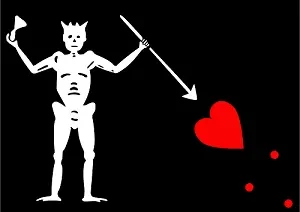
Blackbeard
Blackbeard’s flag depicts a skeleton stabbing a heart with a spear and holding an hourglass.

Bartholomew Roberts
One of Roberts’ flags depicts him holding up an hourglass with a skeleton. A later flag featured him holding a sword and standing on two skulls.
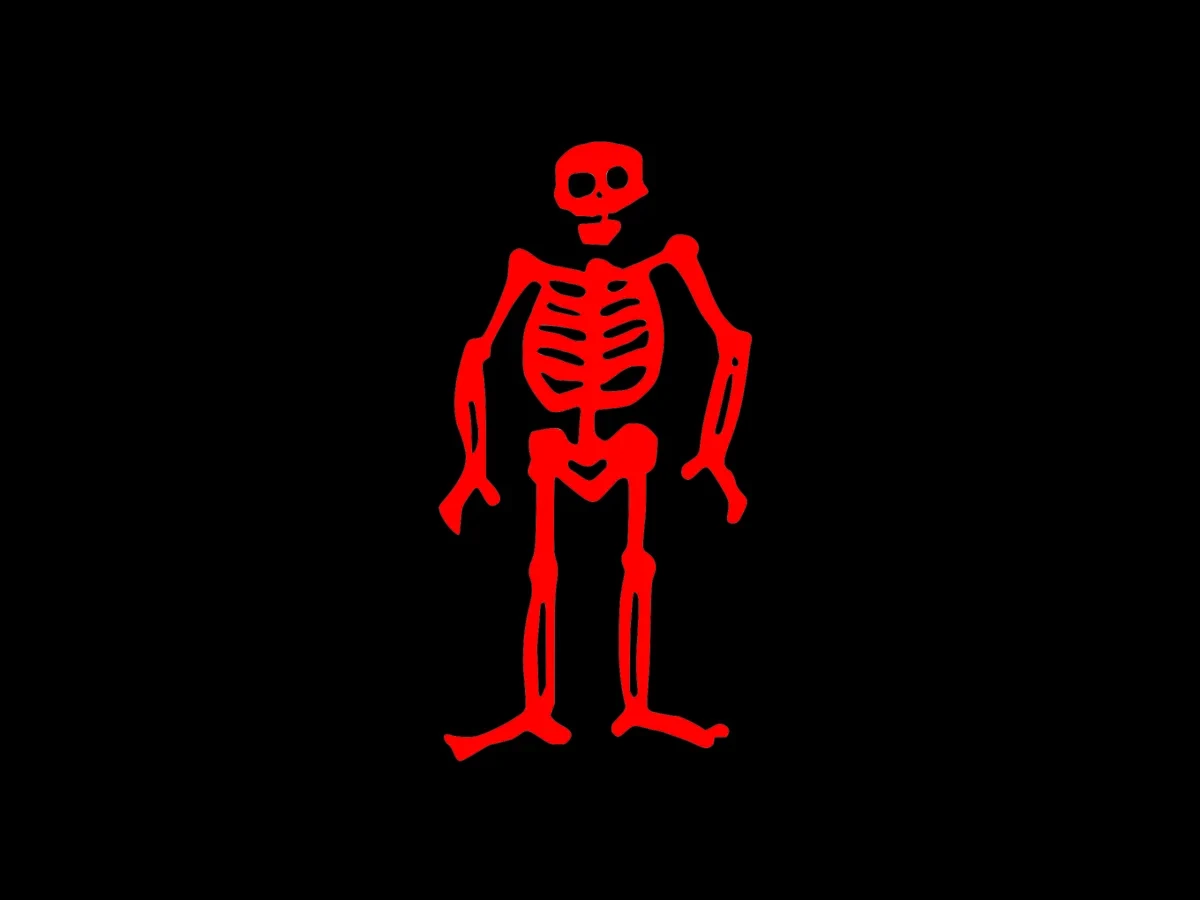
Edward ‘Ned’ Low
Low’s flag featured a red skeleton on a black flag. Low is frequently known as one of the most violent pirates, reputed for torturing and killing crews of captured ships.
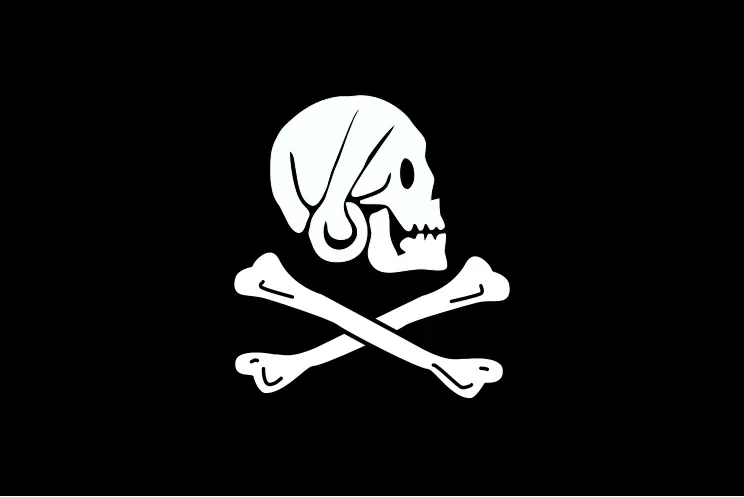
Henry Every
Henry Every was one of many pirates to use the skull and crossbones.
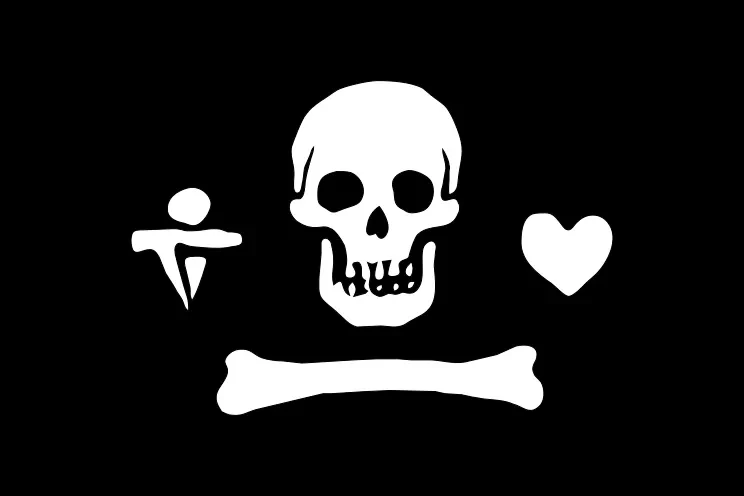
Stede Bonnet
Bonnet’s flag featured a skull with a dagger on the left and a heart on the right to represent a balance of life and death.
